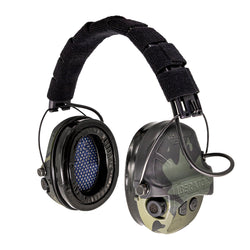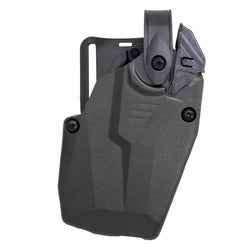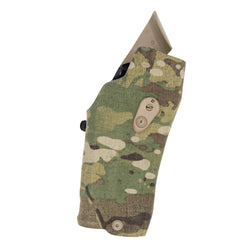The .32 Herrington & Richardson Magnum, more commonly known as the .32 H&R Magnum, is one of our younger handgun cartridges, having been developed in 1983. Recoil is light in this small round with a Relative Recoil Factor (RRF) of just 0.42. For comparison, the .38 Special has a RRF of 0.53.
Until a couple years ago, I really didn’t pay much attention to the .32 Mag. Then, one night while sitting alone in deer camp I pulled out a gun magazine from our extensive stack and read an article by my friend Richard Mann extolling the virtues of the cartridge and its longer brother, the .327 Federal Magnum. Like shooting .38 Specials in a .357 Magnum or .44 Specials in a .44 Magnum, the .32 H&R Magnum can be fired in the .327 Fed. Mag.
When Richard gives an opinion, it is based on facts, real-world use, and experience, so I tend to listen when he has something to say. Modern bullet technology has allowed rifle and handgun cartridges to be the best they can be. I don’t spend a lot of time with shotguns, but improvements in shot have renovated the scattergun as well.
Advancements in handgun bullets have really broadened the horizon, especially for the smaller calibers. The 9mm, once shunned for poor stopping power is now largely the Chosen One for personal defense and law enforcement applications. What changed? Bullet design. Quality ammunition with projectiles that penetrate and expand are the norm. The .32 H&R Mag. has benefited in this department.
Versatility in a handgun
Revolvers chambered in .32 H&R have the functional advantage of being able to fire a couple of other cartridges (.32 S&W and .32 S&W Long), lending to a bit of light-kicking versatility that is great for practice, small game hunting, and teaching purposes.
This also allows for using cheaper ammo, enabling the shooter to practice more for less, which is never a bad thing. A quick internet check shows .32 H&R Magnums running from about $0.83 to $1.22 per round while the .32 S&W Long costs around $0.42 to $0.55 per shot. The .32 S&W is about the same as the.32 S&W Long in cost, or a little more.
The worst thing to do when exposing a new shooter to the sport is to hand them any gun with substantial recoil. Recoil is a portion of shooting that must be worked up to after the fundamentals of stance, grip, trigger control, and sight alignment are mastered. Guns with pleasant recoil should be used to build this foundation of marksmanship and these small .32’s are a good choice to do just that. More on shooting the .32 in a bit.

Last year, Lipsey’s teamed up with Smith & Wesson and industry revolver experts to unveil the S&W Ultimate Carry J-Frame snub-nosed revolvers in .38 Special and .32 H&R Magnum. They incorporated good sights, a better grip/stock design, improved trigger pull, the Endurance Package with titanium pins, chamfered the charge holes, and beveled the front of the cylinder.
Together, they made the S&W J-Frame what it always should have been. It’s truly the Ultimate Carry snubbie. For more details on these guns see James Maybrick’s article, “S&W 432 Ultimate Carry: A Range Review.”
Several manufacturers offer various double-action revolver models in .32 H&R Mag. (or .327 Fed.Mag.) appropriate for defensive carry like Charter Arms, Ruger, and Taurus. Good single-action revolvers can be found by Cimarron, Freedom Arms, Ruger, and Taylors & Company, to name a few.
Testing bullet performance of the .32 h&r magnum
There are a couple of ways to test bullet performance and penetration on the range. One is by using ballistic gelatin as shown in the photo below.

Another option for testing multiple rounds is a handy product called “Intruder in a Box”, by Unbound Ballistic Solutions.
This sturdy cardboard box encases materials that simulate skin, bone, muscle, and internal organs, giving the shooter an idea of how personal defense cartridges and bullets would perform if they had to be used in a deadly confrontation. I suspect it could also be used as a good medium for testing some handgun hunting bullets as well.

Having already been exposed to the impressive penetration of the .32 H&R Magnum at a shooting event hosted by Lipsey’s at Range Ready Studios located at the Gun Talk Media Headquarters in Robert, Louisiana, I decided to give the Intruder in a Box a try on the range here in west Texas.
I set the box on a 55-gallon barrel so that my shots would be straight on to the target, not shooting down into it at an angle as would happen if it were placed on the ground.
Placing the barrel and box in front of the berm, I stepped back seven yards. Sources say three to five yards are the average distances of most defensive shootings and I figured testing this ammo in a personal defense-sized gun at that range to be appropriate.

I had two loads I considered lighter; practice loads on hand in .32 H&R Magnum (Black Hills and Remington) that I would not necessarily carry for personal protection, but I wanted to see what they would do if pressed into such a situation. The other four .32 S&W Long and .32 H&R Mag. loads would be expected to perform adequately in a carry gun.
Ammo Used in Testing
The following is a list of the ammunition, velocity, and its performance. All these loads were shot out of my S&W Ultimate Carry Model 632UC.
- Remington .32 S&W Long 98 gr. Lead Round Nose, 705 fps, stopped after the first bone plate. (Practice Ammo)
- Black Hills .32 H&R 90 gr Flat Point Lead, 750 fps, penetrated first bone plate, stopped midway in box. (Practice Ammo)
The next four did just what they were designed to do as business loads: they penetrated simulated layers of bone, muscle, and tissue.
- DoubleTap .32 H&R 120 gr Hardcast Solid, 1050 fps (6” barrel), stopped on the last bone plate. (Shot to point of aim in S&W Ultimate Carry.)
- DoubleTap .32H&R 60 gr DT Lead Free-(solid copper hollow point)1395 fps (6” barrel), stopped in the last bone plate.
- Buffalo Bore .32 S&W Long 100 gr Hard Cast Wadcutter, 900 fps, stopped on last bone plate.
- Buffalo Bore Heavy .32 H&R Magnum +P 100 gr JHP, 1300 fps, very destructive, stopped in the last bone plate. (Shot to point of aim with S&W Ultimate Carry.)

Range experience with my S&W Ultimate Carry and the performance of this good ammunition have made me confident in carrying it for personal protection. The .32 H&R Magnum is easy to shoot, accurate, sufficiently powerful, and it’s chambered in some easy-packing revolvers.
There should also be something said of the .32 Mag’s ability in the field as a hunting gun. I don’t yet have a lot of experience with it but give me some time and I will. I did wear my Ruger Single-Seven (.327 Fed Mag) stoked with 32 H&R’s one day to try to collect myself a turkey, but the birds didn’t cooperate.
I think it is a good cartridge for varmints, and I would certainly take it up against a coyote or javelina. I have friends who have used the hotter .327 Fed Mag on whitetails with good effect. I suspect the right .32 H&R Magnum would do the same with correct shot placement and a good bullet. On that note, no matter what we’re using, good shot placement and proper bullets are imperative.
“Failures to stop both four and 2 legged predators is more likely a failure of marksmanship and bullet penetration than capacity and bullet expansion.” -Darryl Bolke
a Shootist’s opinion on the validity of the .32 h&r Mag. for personal defense
My friend Darryl “DB” Bolke with American Fighting Revolver is one of the industry’s leading revolver experts. From competition to gunfighting, DB knows his wheel guns and the calibers they are chambered in.
Like Richard Mann, I pay close attention to what DB has to say when it comes to carrying and shooting a revolver. Knowing he is a fan of the .32 H&R; I asked for his thoughts. They are as follows.
“In the case of the modern performance.32 H&R Magnum, .32 Long, and .327 Federal Magnum, we are able to tailor the amount of penetration we want with a combination of bullet design and velocity.
“In the case of defensive anti-personnel loadings we are seeing bullets in all three of these calibers easily make FBI protocols in four-layer denim gelatin testing that I have found to be the most indicative of field performance. At the bottom end we are making minimums with the .32 Long loadings and .32 H&R Magnum and .327 Fed Magnum are able to blow entire 16” blocks of gelatin that is the depth I personally prefer.
“[The].32 Long is very light recoiling and easily handled by those who are more recoil sensitive. Easier to shoot also really helps with the marksmanship side of the equation. These loadings work great in easily carried lightweight snub revolvers. We also get a 20% increase in capacity as we get 6 rounds in guns that normally carry five rounds in .38/.357.
“With guns like the Ruger .327 SP101, it is comfortable to shoot with hot .32 H&R and defensive .327 Fed Magnum loads. It is a gun that is small and thin compared to larger 6-shot guns. With hunting loads, we are seeing rounds that will blow over 32 inches of gel. The versatility of the new .32 stuff is why it is making a huge resurgence and it will only get better as ammunition companies are seeing these great new .32 guns and bringing out new high performance loadings.” -DB Bolke
the 32 h&r May be the perfect cartridge for a small frame revolver
I think the .32 H&R Magnum is about perfect for light, J-Frame-sized double-action revolvers and single-actions the size of Ruger’s Single Six. The round is accurate and delivers plenty of power in these small packages.
Those not caring for the added recoil associated with a snub nose revolver chambered in .38 Special will find the .32 H&R Magnum, loaded with the appropriate ammunition, a good choice for personal defense. Those with a revolver in .327 Fed. Mag. can always step it down a notch with the .32 H&R and still have an adequate cartridge at hand.
For the time being, I will say it’s a good choice for small game and intend to get more familiar with it and the longer-cased .327 Federal Magnum for hunting applications in the future.









